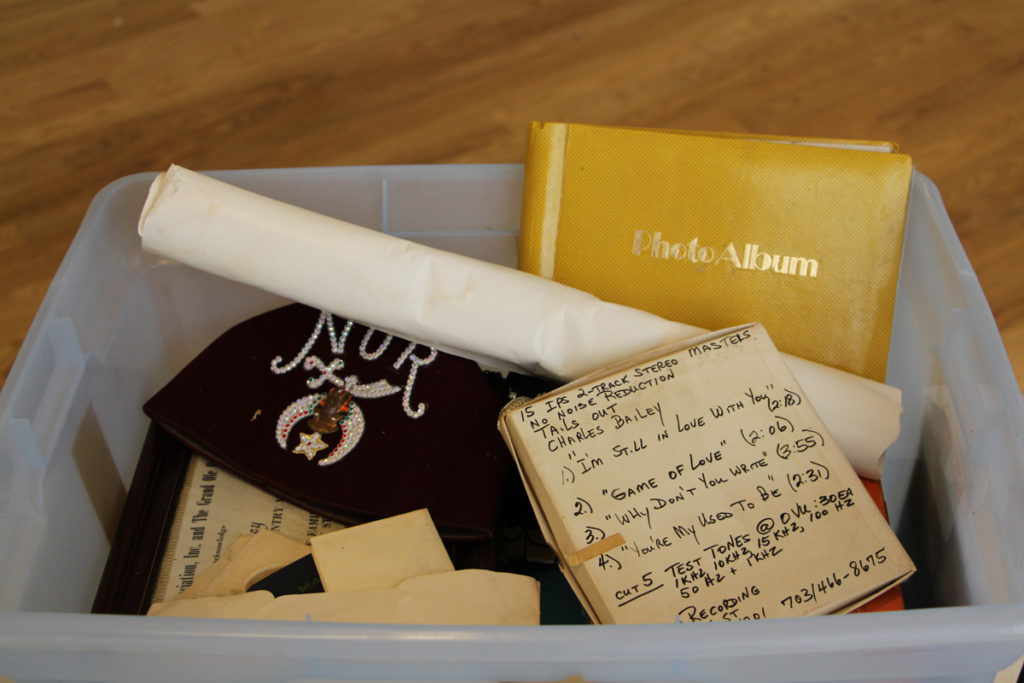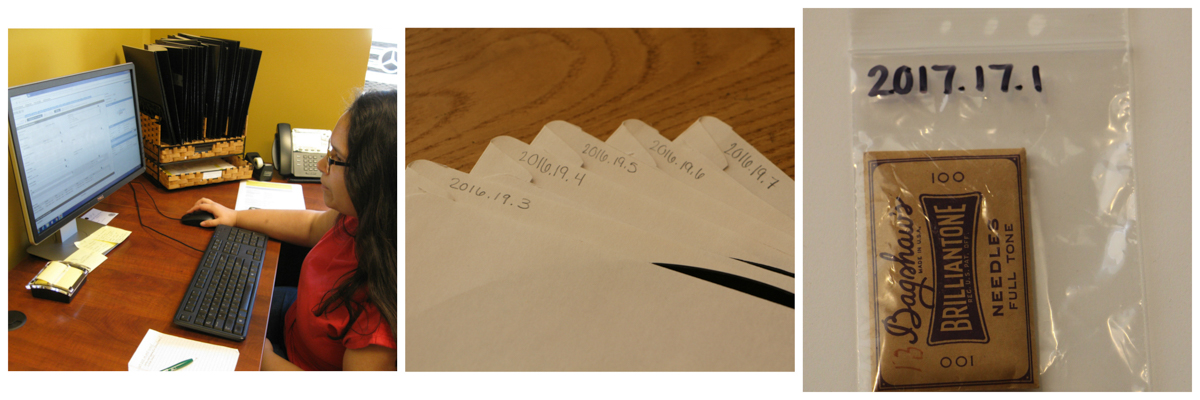It’s part of my job as the museum’s Collections Manager to accession things into the collection (not to pass the collection plate – that’s the development department!). But what the heck is accessioning, anyway?
Accessioning is the process by which something donated to or purchased by the museum becomes an official Object with a capital O. Once accessioned, objects are held in the public trust in perpetuity and maintained with the highest possible standard of care. It may seem pretty straightforward on the surface – someone drops something off, we stick it on a shelf, right? But everything offered to the museum goes through a multi-step process involving much discussion, scheduling, writing tiny numbers on things, and lots and lots of data entry and paperwork. Without all of this hard work, an OBJECT is really just a THING with no story, no context, and no way to even find it in the storage room. Here’s a rundown of everything it takes to turn a thing into an object…
THE OFFER

Folks contact me with offers to donate objects for the collection. I gather as much information as I can: What is it? Is it in good shape? Who used it or made it? Where did it come from? When did it come from? I place said information in a file until…
THE COMMITTEE MEETING

Four times a year, the curatorial staff meets to review potential donations and decide whether or not to accept them into the museum’s collection. Acceptance depends on a number of factors, but the most important questions we ask are: A) Does this help us meet our mission? and B) can we take care of this properly?
Sometimes we consult with content experts outside the organization. If we don’t accept an object, I try to suggest another institution that would be a better fit. If we do accept the object, the next step is…
THE DELIVERY

Sometimes donors mail their things to us, sometimes they bring them to the museum, and sometimes I pick them up. We always schedule delivery in advance because I want to be sure I am in the building and have space on the shelf! In addition to taking physical possession, there is also some paperwork to take care of at this step, such as:
- Signing a Deed of Gift (a form that proves transfer of ownership to the museum)
- Determine a credit line (a line of text that acknowledges the donor whenever an object goes on exhibit)
- Writing down any additional contextual information that I learn from the donor
Getting to meet donors and talk to them about their fascinating family histories is one of the best parts about being a Collections Manager!
Finally, we get to…
THE PROCESSING

Now the real fun begins. Processing a THING includes:
- Cleaning it (if necessary)
- Writing tiny tracking numbers on it
- Putting it in a new archival quality sleeve, folder, box, or bag
- Scanning or taking photographs of it so that we can recognize it during inventory, exhibit planning, or research
- Recording its condition
- Entering data about it into our collections management database
- Placing in its new home on a shelf and recording the location in the database
- Filing all related paperwork in archival folders and saving digital copies to a backed-up drive
TA-DA! What was once merely a THING is now…an OBJECT! It is now ready to help tell the story of our region’s music history via exhibits and publications.
Do you have anything that might make a good object? You can find out more about donating to the museum collection here!


